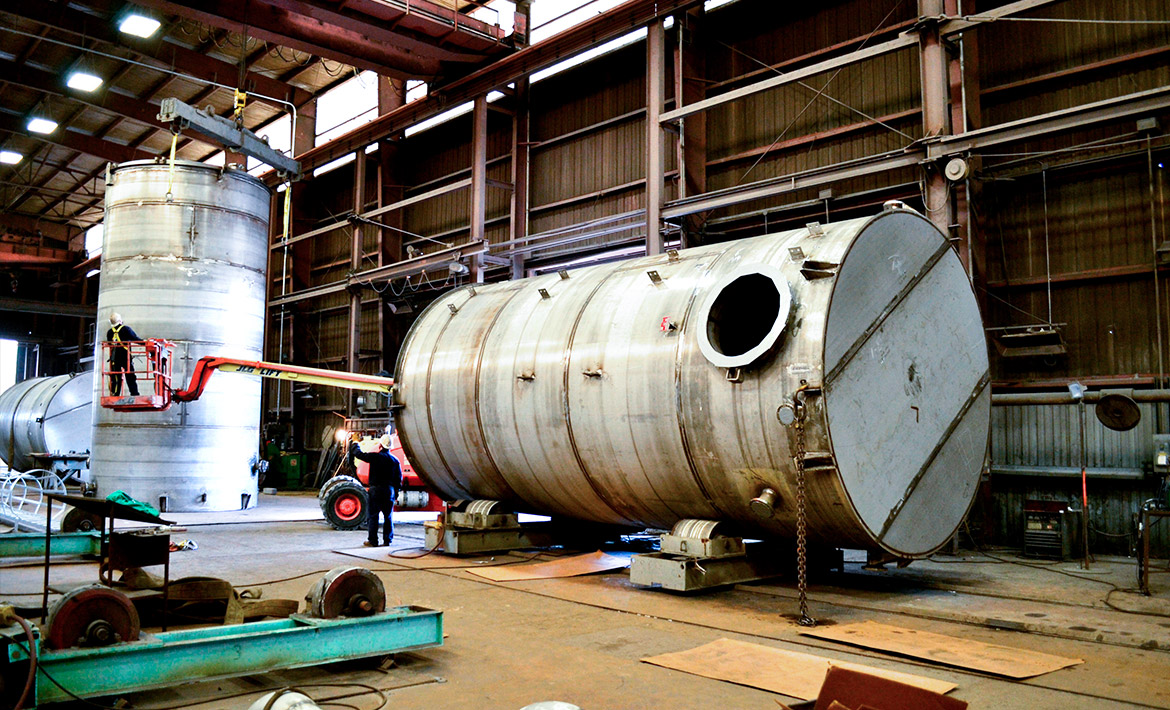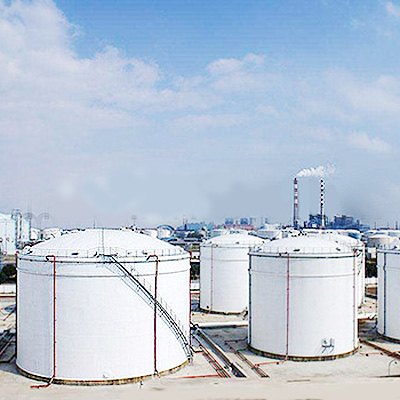A Step-by-Step Look at the Installation Refine of Welding Evaluation Techniques
Welding examination is a vital process that assures architectural integrity and safety and security. The installment of inspection techniques involves several organized actions, each indispensable to achieving reliable results. From preparation and tool option to conducting non-destructive and aesthetic tests, each stage demands mindful attention. Comprehending these procedures can greatly enhance quality control in welding jobs. What challenges emerge in executing these techniques, and how can they be properly addressed?
Recognizing the Significance of Welding Assessment
Welding evaluation is an important component of making sure structural integrity and safety and security in building and construction and production processes. This practice involves reviewing welded joints for problems, making certain that they meet specific requirements and guidelines. By methodically determining weld quality, assessors can determine problems such as cracks, spaces, and insufficient combination, which can endanger the toughness and longevity of structures.
The value of welding assessment extends past instant safety issues; it helps prevent expensive failings and possible hazards in the lengthy term. Reliable evaluation techniques foster compliance with industry requirements, thus enhancing the overall reliability of welded components. On top of that, a robust evaluation process adds to preserving the online reputation of makers and builders, as it ensures clients of the high quality of their jobs. Inevitably, understanding the significance of welding inspection is crucial for promoting safe building and construction techniques and guaranteeing the long life of necessary infrastructure and items.
Selecting the Right Equipment for Examination
When picking the appropriate devices for inspection, it is essential to contemplate the specific requirements of the welding process and the materials included. Various assessment methods, such as visual, ultrasonic, and radiographic testing, necessitate distinct devices customized to their distinct demands. For visual inspections, tools like amplifying calipers and glasses are crucial for evaluating weld high quality. Ultrasonic testing requires specific devices capable of sending and receiving acoustic waves to discover internal problems. Radiographic testing, on the various other hand, utilizes X-ray or gamma-ray resources together with delicate film or digital detectors to expose inconsistencies.
Furthermore, personal protective equipment (PPE) is important to guarantee the safety and security of inspectors throughout assessments. Selecting the right devices not only boosts the precision of inspections however likewise adds to the overall honesty and safety and security of the welding task. Subsequently, a detailed understanding of offered tools and their applications is crucial for reliable welding assessment.
Preparing for the Assessment Process
Before starting the inspection procedure, it is necessary to establish a comprehensive strategy that details the extent and goals of the assessment. This strategy needs to consist of certain requirements that specify what makes up appropriate high quality in the welding work being checked. Recognizing the pertinent codes and standards is crucial, as they will certainly direct the assessment requirements and techniques.
Furthermore, workers associated with the evaluation has to be properly trained and certified in welding assessment strategies to ensure integrity and precision. A list can be useful in arranging the numerous aspects of the assessment, varying from equipment readiness to ecological conditions that can affect the analysis.

Logistical factors to consider such as scheduling, offered sources, and interaction in between team members ought to be addressed. By preparing methodically, examiners can boost the effectiveness of the analysis and ensure that all crucial elements are appropriately thought about before waging the evaluation itself.
Carrying Out Visual Inspections

Performing visual evaluations is a crucial action in the welding inspection procedure, needing cautious prep work to assure efficient analysis. Examiners must be acquainted with key issue indicators that can signal possible problems in weld high quality. By focusing on these facets, one can enhance the overall reliability of the inspection results.
Planning For Visual Inspection
Aesthetic examination acts as an important initial step in the welding examination procedure, guaranteeing that any possible issues are identified early (API 650 Welding Inspection). Proper preparation is essential for effective aesthetic assessment. Examiners need to begin by evaluating relevant documents, consisting of welding treatments and specifications, to recognize the task demands. They should gather required devices, such as multiplying glasses, flashlights, and suitable individual safety devices (PPE) A detailed assessment of the assessment area is crucial; inspectors ought to confirm it is totally free and tidy click to investigate of obstructions. In addition, it is very important to develop optimal illumination conditions to improve visibility of welds. By taking these preparatory steps, examiners can develop an atmosphere for recognizing disparities and ensuring the stability of the bonded frameworks
Key Issue Indicators
An extensive understanding of vital issue indicators is necessary during aesthetic evaluations to guarantee the top quality and safety of bonded joints. Assessors should concentrate on details signs such as fractures, porosity, undercuts, and insufficient combination. Cracks may appear as sharp lines and can compromise structural stability. Porosity manifests as little openings that can compromise weld toughness. Undercuts, which are grooves along the weld edge, can cause stress focus. Incomplete blend shows that the weld steel did not effectively bond with the base material, leading to a weak joint. By methodically determining these issues, assessors can determine compliance with market requirements and boost the overall dependability of bonded structures, inevitably adding to much safer functional conditions.
Executing Non-Destructive Examining Strategies

Many non-destructive testing (NDT) methods are integral to assuring the honesty of bonded frameworks without jeopardizing their capability. These methods enable examiners to review weld high quality and spot problems without causing damages to the products being checked. Typical NDT techniques consist of ultrasonic screening, radiographic testing, magnetic bit screening, and dye penetrant testing. Each technique offers a details objective, addressing various kinds of flaws such as splits, porosity, or insufficient combination.
Implementing NDT strategies requires an organized technique, beginning with selecting the appropriate approach based on the products and the nature of the weld. Educating personnel in these techniques is essential for accurate results. Furthermore, developing clear treatments and standards assurances uniformity throughout the assessment process. By integrating NDT right into the welding examination process, companies can enhance the reliability of their items while reducing prospective risks related to architectural failures. This aggressive strategy inevitably adds to maintaining safety and top quality standards in welded constructions.
Recording and Examining Evaluation Outcomes
Effective documentation and analysis of assessment outcomes are necessary components of the welding examination process. Precise documents of examination findings act as a reference for quality control and compliance with industry requirements. API 650 Welding Inspection. Assessors ought to utilize structured forms or digital systems to log information such as the sort of weld, inspection approaches employed, and any type of disparities recognized throughout the analysis
As soon as data is accumulated, comprehensive evaluation is vital. This involves contrasting outcomes against established requirements to recognize fads or persisting issues. Statistical devices might be utilized to quantify defects and examine their effect on general weld high quality.
Additionally, reliable communication of searchings for to pertinent stakeholders is vital. Summaries and reports ought to be clear and succinct, highlighting crucial insights and suggestions for restorative actions. By systematically documenting and assessing evaluation results, organizations can promote continuous renovation in welding practices and improve product honesty.
Frequently Asked Questions
What Credentials Are Needed to Come To Be a Welding Examiner?
To end up being a welding assessor, one commonly needs appropriate accreditations such as AWS great site CWI, together with experience in welding methods, understanding of welding codes, and proficiency in assessment strategies to guarantee high quality and security standards.
Exactly How Frequently Should Welding Inspections Be Conducted?
Welding inspections should be carried out on a regular basis, commonly after each weld is finished, and occasionally throughout projects. Variables such as job intricacy, industry standards, and governing requirements can affect the regularity of these examinations.
What Is the Cost of Welding Examination Providers?
The cost of welding assessment services differs considerably based on variables such as job complexity, place, and dimension. Normally, prices range from $100 to $150 per hour, with extra costs for specialized screening and qualifications.
Exist Certifications for Welding Inspectors?
Yes, there are various qualifications for welding assessors, consisting of those supplied by the American Welding Culture (AWS) and the International Institute of Welding (IIW) These qualifications ensure examiners have the essential abilities and knowledge for reliable evaluations.

Just how Do I Choose an Examination Company?
To choose an examination service supplier, one must examine credentials, experience, market online reputation, and customer reviews. Furthermore, comparing solution offerings and rates can assist guarantee the chosen supplier meets details project needs effectively.
In addition, personnel involved in the assessment must be effectively educated and accredited in welding inspection methods to guarantee integrity and precision. Carrying out aesthetic inspections is an important action in the welding evaluation procedure, calling for careful prep work to guarantee efficient examination. Aesthetic YOURURL.com inspection offers as a crucial first action in the welding assessment process, guaranteeing that any possible defects are recognized early. Reliable documents and evaluation of evaluation outcomes are necessary elements of the welding evaluation procedure. Welding assessments must be performed on a regular basis, usually after each weld is completed, and regularly during projects.